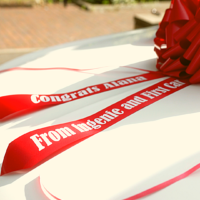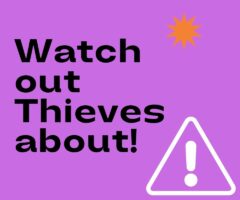The top 10 reasons people fail their test – part 1!

We’ve all experienced failing, one way or another and the driving test is a common one! In fact, only 49.8% passed their test between 2020/2021.
So, we thought it might be helpful to look into what the gov have said catches most people out on their test and maybe give a little insight into how to nail yours!
First up:
-
Not making effective observations at junctions

Putting it plainly, you need to make sure it’s safe before proceeding onto a new road. To do this you need to show you can use your eyes to do the following:
- Judge the speed of other cars coming towards you
- Notice cars approaching a roundabout to the right of you
- Check before leaving a junction
- Giving way and checking for traffic on a dual carriageway
- Recognising a junction at a crossroads
- Looking in time when you emerge from a junction
- Looking left when turning left
Ok, so there is gonna be a lot of head turning to really prove you’re looking around because what you don’t want is anyone ever having to make an emergency stop to avoid hitting you.
So open those beautiful eyes wide and own those junctions!
Mirrors

Hey good looking! Who’s that staring back at you? Someone who’s going to pass their test, that’s who!
We’re all familiar with mirrors (I have a love hate relationship with mine), so this one should be easy.
When doing ANYTHING during your driving test (and lessons) use those mirrors like your result depends on it… because it does. Showing you know how to use your mirrors to aid any type of manoeuvre and driving will give you a better chance at passing.
Be the vainest person in that car and look, look, look into that shiny reflector more times than you’ve ever done before.
Plus, according to the gov report on this, these are the most crucial times to use a mirror (your examiner will be looking to see if you do these):
- Checking all mirrors when changing lanes on a dual carriageway
- Changing lanes on a roundabout when other cars are in the lane next to you
And basically any time you move off, turn into or out of roads.
Just remember:
Rear, left, right
Right, left, rear
Left, rear, right
EVERY.SINGLE.TIME
Junctions (turning right)

Now, what could possibly be so hard about this? A lot apparently and it’s a good idea to have a think about these next points and how you can master them.
- Being in the right position when turning right at a roundabout – so basically don’t be in the left hand lane
- Not being in the way when trying to turn right into a smaller road. If you’re able to position your car badly and block space that was wide enough to let other cars through
- Looking like your turning left when trying to turn right on a junction road with no markings
Response to Signals (traffic lights)

This one is pretty self-explanatory but there’s actually more to this than we probably thought, so let’s get into it!
DON’T EVER RUN A RED LIGHT (you know, this, I don’t really need to say it but it has been known to happen).
Equally… don’t wait at a green one! Keep your eye on it and be ready. The yellow light is to warn you to get prepared to move off so that when it turns green, you can be on your way.
This one is about cyclists - you know there are sometimes 2 white lines at a traffic light? Well, the one nearest to the light is for cyclists to wait at and the other one is for you to stop at.
Next one is actually something that still makes me really anxious – turning right at a traffic light where you have to wait in the middle of the road. Basically, don’t still wait in the middle of the road if the lights have gone red and oncoming traffic has stopped. You still need to turn, or you could be faulted for causing a block.
Lastly, going when a light is green but the junction is clear – this will show poor judgement. So, if the junction is blocked, it’s ok to wait until it’s clear and if it turns red again before that happens, that’s fine, just wait for the next one.
Smooth operator

That’s right, you gotta control that steering! You have to show you’re in control, because you are!
To prove this, all you have to do is steer the car as smoothly as an airbrushed selfie and at the right times. If you do this too early or too late you could end up hitting the curb or swerve into the other side of the road and… yeah, that’s gonna be a fail.
Being in control will avoid the following:
- Steering too late or not enough when having to turn left into a junction
- Mounting the pavement because you didn’t steer enough when you went round a bend
- Steering too late when turning right into a small road, forcing you onto the wrong side of the road
- Getting your wheels well acquainted with the curb when pulling up to a pavement (in other words curbing your wheels to shreds)
- Steering too late when coming up to parked cars and getting too close (those pesky things just jumped out at you didn’t they!)
You’re the captain of this ship… ummm, car, but you know what I mean.
Click here to read part 2 for the other 5 reasons
By Chelsey Fielding
Chelsey loves her convertible... a resident poser at ingenie. She had 5 driving instructors overall and during her practical test there was a hail storm! She still passed though - a stroke of luck or attempted sabotage from the driving gods? You decide.






